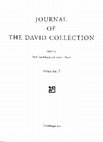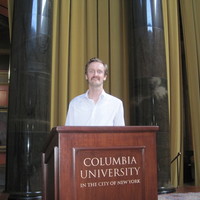Books by Evrim Binbaş
Edited Books by Evrim Binbaş

The articles gathered in this volume are dedicated to Professor İsenbike Togan by her students, c... more The articles gathered in this volume are dedicated to Professor İsenbike Togan by her students, colleagues, and friends to honor and celebrate her long and continuing career as one of the world's foremost scholars in the field of Central Asian history. The range of articles that the contributors to this festschrift submitted reflects in many ways the depth and breadth of İsenbike Togan's works and her understanding of history. Indeed, from a geographical perspective, her published works cover the vast area from China to Anatolia, and from a chronological perspective they extend from the 7th to the 21st century. While the central historical question with which İsenbike Togan engages most frequently is the nature of political culture, her books and articles address a wide range of issues and questions, including women's history, the dhikr ceremonies of the Naqshbandi order in Eastern Turkestan, legitimacy and state formation in Central Asia, tribal politics from the perspective of anthropological history, and Chinese historiography. Through her command of a wide range of languages, historical issues, and textual sources, she not only makes 'surprising' connections among these seemingly diverse historical topics, but offers systematic and new approaches in the study of the Turco-Mongol peoples. Her intellectual adventure has been shaped by her unique ability to engage with the objects of her inquiry in a truly holistic and integrative manner; her works, while thoroughly rooted in painstaking and careful textual and linguistics analysis, consistently address and illuminate the 'big picture' in history.
Articles by Evrim Binbaş

Genealogical Manuscripts in Cross Cultural Perspective, 2025
It is well known among historians of the Ottoman Empire that an important component of Ottoman po... more It is well known among historians of the Ottoman Empire that an important component of Ottoman political discourse was the genealogical fiction connecting the Ottoman dynasty with a mythical figure called Oghuz Khan. In this genealogical fiction, the figure of Oghuz Khan connected the Ottoman dynasty with Japheth, son of Noah, hence locating the dynasty in the ranks of those 'Japhetic lineages' that represented the nomadic northern peoples in the Islamic mythology. The prominence of the Japhetic lineage in the sixteenth century was often explained as a manifestation of the Ottomans' dire need to legitimize their authority in the eyes of their subjects. However, what is less known is that there was actually another genealogical fiction that replaced the ancestral figure of Oghuz Khan with Esau, son of Isaac, hence giving the Ottoman dynasty a 'prophetic lineage'. This paper attempts to explain why there were two parallel genealogies in the Ottoman political discourse and discusses how Ottoman genealogists used visual strategies to depict this genealogical duality.
JESHO - Journal of the Economic and Social History of the Orient, 2024

Journal of the David Collection, 2021
Power belongs to God Most High. Grace belongs to God Most High. 4) The one who is steadfast in th... more Power belongs to God Most High. Grace belongs to God Most High. 4) The one who is steadfast in the affairs of Muslims and the Guardian of the Commander of the Faithful, Sultan Iskandar. By his command, which is to be obeyed. 5) Infinite praise and homage, for the nostrils of the holy spirits of the pure progeny (of the Prophet e v r i m b i n b a ş a n d w i l l k w i at k o w s k i 30) Nasir al-Milla wa'l-Din Sayyid Sulayman ibn al-Yahyawi al-Husayni, together with his two sons, both chosen ones, great ones in lineage, exemplars of the sayyids and the spotless progeny, the lustre in the eyes of believers, 31) Sayyid Nur al-Milla wa'l-Din (Ali and Sayyid Sa(d al-Milla wa'l-Din Ahmad ibn al-Yahyawi-may God Most High perpetuate their pre-eminence-came to the court of the Refuge of the World and was blessed with the good-fortune of kissing his throne carpet. 32) And in the presence of the throne it was obtained as firmly as possible and the decree of the one who commands the obedience of the world-may his shadow never decline in the lands and the regions-was put into pen to the effect that the children and 33) the old and young (male members of the Timurid dynasty), the commanders of the myriads, divisions, and centuries, the pillars of the government, court nobles, deputies, and those appointed to office in the protected domains should regard them (i.e. Sayyid Sulayman and his sons) with sun-like affection 34) (and) treat them with all the marks of veneration, honour and respect. And that in whatever domain or land they should alight in, their arrival should be venerated and revered, and that they should consider helping and assisting them in all their dealings 35) as a duty and as necessary, and that they should escort them in halting-places and stations that are places of fear and terror, and not requisition their animals under the pretext of the relaying of post horses (ulagh). And they should not be harassed on account of 36) tolls, and they should consider their welfare and protection as necessities. In no moment should they neglect to guard them and leave them unprotected. Nor should they demand gifts or presents from them, and should they have business with someone, the overseers should assist (them) and ensure the fulfilment of their rights. 37) And since consideration of the affairs of mighty sayyids-may God Most High increase their number among the people, for they are the leaf and the fruit of the beautiful tree of prophecy-requires and demands as an obligation (our) attention, 38) they should in all matters venerate them. They should not demand alms of them […] and should not harass their servants, slaves or slave-girls, or seize any of them by force. 39) And they should arrange it so that they should pass their time under the imperial shadow in peace and ease of mind so that the signs of gratitude will become manifest and spread. 40) Twenty eighth of Dhu'l-Qa(da al-Haram of the year eight hundred and sixteen (19 February 1414) 41) They should act accordingly (and) when it is ornamented and adorned with the majestic signature, they should rely on it. Written on high command-may God Most High elevate it and perpetuate its efficacity-and may it be always obeyed and followed. 42) And praise be to God, the Lord of the Worlds, and may there be a (good) end for the devout ones and benedictions and peace upon the best of His creation, Muhammad, and upon his family and companions, all of them. 43) Lord, let it end well and beautifully!
JESHO - Journal of the Economic and Social History of the Orient, 2022
This is an open access article distributed under the terms of the CC BY-NC 4.0 license.

Journal of Persianate Studies, 2019
This article provides an account of the transfer of power from the Jalayirids to the Qara Qoyunlu... more This article provides an account of the transfer of power from the Jalayirids to the Qara Qoyunlu in ʿErāq al-ʿArab (Iraq) and the religio-political history of the Qara Qoyunlu dynasty with a particular focus on the reign of Shāh Mohammad b. Qara Yusof, the Qara Qoyunlu ruler in Baghdad between 1411/814 and 1433/836. Contemporary historians accused Shāh Mohammad of unbelief and apostasy. The article argues that the reports on his conversion to Christianity might be an indication for the existence of a form of Islamic piety that involved the veneration of Jesus. Unlike the veneration of ʿAli b. Abi Tāleb and his descendants, the veneration of Jesus among the Turkmens of the fifteenth century is an understudied topic. This article is a contribution to the debate on the issue of the so-called "Turkmen religiosity," which is often considered the wellspring of non-mainstream religious movements in the sixteenth and seventeenth centuries.

This article problematizes the use of messianic discourse in the articulation of political sovere... more This article problematizes the use of messianic discourse in the articulation of political sovereignty in the early fifteenth century Timurid context. It argues that the concept of condominium was among the alternatives that the Timurid authorities considered in order to formulate a novel constitutional framework for the Timurid Empire after the death of Timur, and in specific political circumstances especially in Fars, messianic and condominial principles of sovereignty conflated. To further this argument, the article focuses on one particular case, the Timurid historian Muʿīn al-Dīn Naṭanzī, who formulated the concept of condominial sovereignty, in which both Shāhrukh and Iskandar appear as equal sovereign with messianic prerogatives. Naṭanzī's concept of condominial messianism was connected to Iskandar's unique formulation of condominial sovereignty through his coinage. This article further argues that too many religio-political concepts are used interchangeably in secondary literature, even though our sources clearly distinguish them in terms of their specific constitutional associations.
This article reflects on Sanjay Subrahmanyam's article on early modern cosmopolitan-ism entitled ... more This article reflects on Sanjay Subrahmanyam's article on early modern cosmopolitan-ism entitled " The Hidden Face of Surat: Reflections on a Cosmopolitan Indian Ocean Centre, 1540-1750, " and suggests that the cosmopolitan space was a political space where competing ideas of sovereignty clashed with each other. Therefore, the article argues that the study of political ideas and competing forms of constitutional programs should accompany the focus on lifestyle preferences of early modern cosmopo-lites when we study cosmopolitanism.
Islamic Literature and Intellectual Life in Fourteenth- and Fifteenth-Century Anatolia
Contact and Conflict in Frankish Greece and the Aegean, 1204-1453, 2014
Unity in Diversity: Mysticism, Messianism and the Construction of Religious Authority in Islam, 2013

Royal Holloway, London This article provides a contextual analysis of the assassination attempt o... more Royal Holloway, London This article provides a contextual analysis of the assassination attempt on the Timurid ruler Shāhrukh's life on 21 February 1427 in Herat. According to the contemporary Timurid chroniclers, Aḥmad-i Lur, a Ḥurūfī by profession, tried to kill Shāhrukh. Having survived the attack with light injuries, Shāhrukh reacted harshly and executed many of those who were accused of conspiring against him. During the interrogations, many other intellectuals who professed as a method of inquiry the ‘ilm-i ḥurūf (the science of letters) were also accused of participating in the conspiracy. In this article, I treat the assassination attempt as a moment of crisis in Timurid politics, study it in relation to the transformation of the intellectual landscape towards the mid-fifteenth century, and provide an in-depth textual and contextual analysis of the historiographical sources as well as the writings of those intellectuals who left a first-hand testimony of the subsequent interrogations. After a close scrutiny of the available evidence, I demonstrate that the interrogations of those intellectuals who practiced the science of letters predated the assassination attempt, and I argue that the assassination attempt was just an episode, albeit an important one, in Shāhrukh's attempts to control and regulate the emerging public sphere in Iran and Central Asia.
Acta Orientalia Hungaricae. 65(2012): 391-417
This article revisits the complex oeuvre of the Timurid historian Sharaf al-Dīn 'Alī Yazdī. Yazdī... more This article revisits the complex oeuvre of the Timurid historian Sharaf al-Dīn 'Alī Yazdī. Yazdī is most famous for two chronicles that he wrote: The Ẓafarnāma, which mainly includes a biography of Timur, and the Muqaddima, a work devoted mainly to the history of Chinggis Khan and his descendants. However, recent studies have demonstrated that Yazdī left behind three other historical works or parts thereof: the Dībācha, the Second Maqāla, and the fragments of the Fatḥnāma-yi Humāyūn found in the Dīvān-i Sharaf. In this article, I argue that Yazdī could not finish his historical project and all the extant works written by him are fragments of a larger historical project. I also attempt to shed light on how they are related to each other, and propose a tentative chronology for the composition of each fragment.
Encyclopedia Entries by Evrim Binbaş
Encyclopaedia Iranica - Online edition, 2010











Uploads
Books by Evrim Binbaş
Edited Books by Evrim Binbaş
Articles by Evrim Binbaş
Encyclopedia Entries by Evrim Binbaş
Turkish translation: How to write fake global history